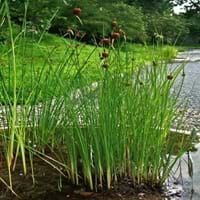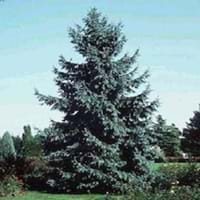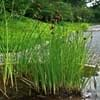Life Span
Perennial
Perennial
Type
Aquatics
Needled or Scaled Evergreen
Origin
Eastern Europe, Western Asia
North America, United States, Western United States, Northwestern United States, California, Canada
Types
Common Cattail, Southern Cattail, Dwarf Bulrush
mexicana , white spruce
Number of Varieties
Not Available
Habitat
Lake margins, Ponds, Swamps
Alpine Meadows
USDA Hardiness Zone
3-11
3-7
Sunset Zone
21,22
A2, A3, 1a, 1b, 2a, 2b, 3a, 3b, 4, 5, 6, 7, 10, 14, 15, 16, 17
Habit
Upright/Erect
Pyramidal
Flower Color
Yellow, Green, Brown, Chocolate
Not Available
Flower Color Modifier
Not Available
Bicolor
Fruit Color
Light brown, Light Red
Light brown
Leaf Color in Spring
Green, Dark Green
Blue Green, Steel Blue
Leaf Color in Summer
Green, Dark Green
Blue Green, Steel Blue
Leaf Color in Fall
Green, Dark Green
Blue Green
Leaf Color in Winter
Brown
Blue Green
Leaf Shape
Long linear and narrow
Long hair-like leaves
Plant Season
Summer, Fall, Winter
Spring, Summer, Fall, Winter
Sunlight
Full Sun, Partial Sun
Full Sun, Partial Sun
Type of Soil
Clay, Loam, Sand
Clay, Loam, Sand
The pH of Soil
Acidic, Neutral
Acidic, Neutral
Soil Drainage
Poorly Drained
Well drained
Bloom Time
Summer, Late Summer, Early Fall
Not Available
Tolerances
Wet Site
Drought
Where to Plant?
Container, In Water
Ground
How to Plant?
Runners
reseeds, Seedlings
Plant Maintenance
Low
Medium
Watering Requirements
Plant grows in water
Do not water excessively
In Summer
Aquatic Plant
Lots of watering
In Spring
Aquatic Plant
Moderate
In Winter
Aquatic Plant
Average Water
Soil pH
Acidic, Neutral
Acidic, Neutral
Soil Type
Clay, Loam, Sand
Clay, Loam, Sand
Soil Drainage Capacity
Poorly Drained
Well drained
Sun Exposure
Full Sun, Partial Sun
Full Sun, Partial Sun
Pruning
Prune in early spring, Remove damaged leaves, Remove dead branches, Remove dead leaves
Prune ocassionally, Remove damaged leaves, Remove dead branches, Remove dead leaves
Fertilizers
Nitrogen, Phosphate
All-Purpose Liquid Fertilizer
Pests and Diseases
Red blotch
Needle rust
Plant Tolerance
Drought
Light Frost
Flower Petal Number
Single
Single
Fragrant Bark/Stem
No
Yes
Foliage Texture
Medium
Fine
Foliage Sheen
Matte
Matte
Attracts
Birds, Flying insects
Birds
Allergy
no allergic reactions
Unknown
Aesthetic Uses
Beautification, Showy Purposes, Water gardening
Beautification, Landscape Designing, Woodland margins
Beauty Benefits
Not Available
Not Available
Environmental Uses
Food for animals, Food for birds, Food for insects, Nesting sites for birds
Air purification
Medicinal Uses
Nutrients
Unknown
Part of Plant Used
Leaves
Not Available
Other Uses
Decoration Purposes, Showy Purposes, Used as Ornamental plant
guitar making, Used as Christmas Tree
Used As Indoor Plant
Yes
No
Used As Outdoor Plant
Yes
Yes
Garden Design
Bog Garden, Container, Water Gardens
Feature Plant, Screening, Wind Break
Botanical Name
TYPHA minima
PICEA engelmannii
Common Name
Dwarf Cattail
mountain spruce
In Hindi
बौना कैटेल
Engelmann spruce
In German
Dwarf Rohrkolben
Engelmann spruce
In French
Cattail nain
Engelmann spruce
In Spanish
Espadaña enano
Engelmann spruce
In Greek
Νάνος Cattail
Engelmann spruce
In Portuguese
Tifa Dwarf
Engelmann spruce
In Polish
Dwarf Ożypałka
Engelmann spruce
In Latin
Pumilio Cattail
Engelmann spruce
Phylum
Tracheophyta
Pinophyta
Class
Liliopsida
Pinopsida
Family
Typhaceae
Pinaceae
Clade
Angiosperms, Commelinids, Monocots
Angiosperms
Tribe
Not Available
Not Available
Subfamily
Not Available
Not Available
Number of Species
Not Available
Difference Between Dwarf Cattail and Engelmann Spruce
If you are confused whether Dwarf Cattail or Engelmann Spruce are same, here are some features about those plants to help you choose better. Many people think that these two plants have the same characteristics, but one can see Dwarf Cattail and Engelmann Spruce Information and learn more about it. Fertilizers required for proper growth of Dwarf Cattail are Nitrogen and Phosphate, whereas for Engelmann Spruce fertilizers required are All-Purpose Liquid Fertilizer. Hence, one should know the basic difference between Dwarf Cattail and Engelmann Spruce if you are planning to have them in your garden to enhance its beauty.
<
Flowering PlantsImportance of Dwarf Cattail and Engelmann Spruce
Want to have the most appropriate plant for your garden? You might want to know the importance of Dwarf Cattail and Engelmann Spruce. Basically, these two plants vary in many aspects. Compare Dwarf Cattail and Engelmann Spruce as they differ in many characteristics such as their life, care, benefits, facts, etc. Every gardener must at least have the slightest clue about the plants he wants to plant in his garden. Compare their benefits, which differ in many ways like facts and uses. The medicinal use of Dwarf Cattail is Nutrients whereas of Engelmann Spruce is Unknown. Dwarf Cattail has beauty benefits as follows: Not Available while Engelmann Spruce has beauty benefits as follows: Not Available.
Compare Facts of Dwarf Cattail vs Engelmann Spruce
How to choose the best garden plant for your garden depending upon its facts? Here garden plant comparison will help you to solve this query. Compare the facts of Dwarf Cattail vs Engelmann Spruce and know which one to choose. As garden plants have benefits and other uses, allergy is also a major drawback of plants for some people. Allergic reactions of Dwarf Cattail are no allergic reactions whereas of Engelmann Spruce have Unknown respectively. Having a fruit bearing plant in your garden can be a plus point of your garden. Dwarf Cattail has no showy fruits and Engelmann Spruce has showy fruits. Also Dwarf Cattail is not flowering and Engelmann Spruce is not flowering . You can compare Dwarf Cattail and Engelmann Spruce facts and facts of other plants too.





